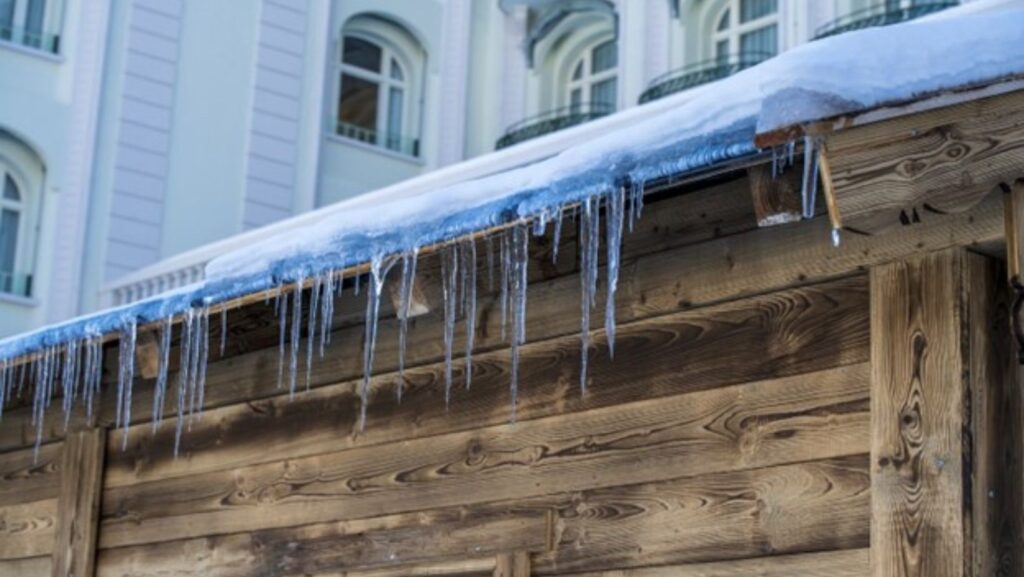
Winter transforms the world into a scenic wonderland with snow-laden rooftops, frosted trees, and cozy evenings by the fireplace, creating a serene atmosphere. However, this beauty also comes with challenges for homeowners, especially in the form of ice dams and potential roof damage. Ice dams occur when snow on the roof melts and refreezes at the edges, trapping water and compromising the roof’s integrity. Left unaddressed, they can lead to costly repairs. Understanding their formation and implementing preventive measures is vital to protect your home during the season.
All About Ice Dams: What Are They?
Ice dams are ridges of ice that form along the edges of a roof. These dams create a barrier that prevents melting snow from draining properly. When the water trapped behind an ice dam refreezes, it can seep under shingles, penetrate the roof deck, and lead to leaks, water damage, and even structural issues.
Ask for specific details about these warranties. What exactly do they cover, and for how long? Are there any conditions or exclusions to be aware of? This is an area where less reputable contractors often fall short, promising warranties verbally but failing to deliver them in writing. Protect yourself by ensuring all warranties are clearly documented in the contract.

For roof repair, roof replacement, or metal roofing services, trust Home Pro Roofing, a leader in delivering top-quality work and transparent warranties that provide homeowners with true peace of mind.
Prevention Begins with Proper Insulation and Ventilation
The first line of defense against ice dams is ensuring your home is well-insulated and ventilated. Heat loss through the roof is a primary contributor to uneven roof temperatures. Start by inspecting your attic’s insulation. Proper insulation prevents warm air from escaping into the attic and keeps your roof’s surface cold.
Ventilation is equally important. A well-ventilated attic promotes airflow, which helps maintain consistent roof temperatures. Ridge vents and soffit vents work in tandem to allow cold air to enter and warm air to escape, minimizing the risk of snowmelt and ice dam formation. Together, insulation and ventilation create a balanced system that protects your roof from the perils of winter.
Gutter Maintenance
Your gutters play a crucial role in managing melting snow and preventing ice dams. Clogged or poorly maintained gutters can exacerbate ice dam formation by trapping water along the roof’s edge. Before winter arrives, take the time to clear your gutters of leaves, debris, and other obstructions. Installing gutter guards can also be a worthwhile investment, as they reduce the need for frequent cleaning.
Additionally, ensure that your downspouts direct water away from your home’s foundation. This not only prevents ice dams but also protects your home from water pooling and subsequent basement flooding. Regular gutter maintenance is a straightforward yet effective way to mitigate winter roof damage.
Managing Snow Accumulation Safely
Another key strategy to prevent ice dams is managing snow accumulation on your roof. Too much snow can create excessive pressure and uneven melting, both of which contribute to ice dam formation. Invest in a roof rake designed for snow removal. These tools allow you to safely remove snow from the roof’s edge without climbing onto it.
When using a roof rake, focus on clearing the lower three to four feet of your roof. This prevents meltwater from refreezing at the eaves. Be mindful of safety while removing snow; avoid standing directly under areas where snow might slide off. If snow removal feels overwhelming, consider hiring professionals who are trained to handle the task safely and efficiently.
Heat Cables
For homes particularly prone to ice dams, heat cables can be a game-changer. These electrical cables are installed along the roof’s edges and in gutters to melt snow and ice, ensuring proper drainage. While not a substitute for insulation and ventilation, heat cables provide an additional layer of protection against ice dams.

Before installing heat cables, consult with a roofing expert to determine the best placement and configuration for your home. Keep in mind that while heat cables are effective, they consume electricity, so be mindful of their energy use. They’re best employed as part of a comprehensive strategy that includes insulation, ventilation, and regular maintenance.
Professional Roof Inspections
Prevention is always better than cure, and this adage rings especially true when it comes to your roof. A professional roof inspection can identify potential vulnerabilities that could lead to ice dams or winter damage. Roofing experts can assess your insulation, ventilation, and overall roof condition, offering tailored solutions to keep your home protected.
Moreover, professionals can spot and address minor issues such as loose shingles, damaged flashing, or sagging gutters before they escalate into costly problems. Scheduling a roof inspection before winter sets in is a proactive step that ensures your home is ready to face the elements.
A Comprehensive Approach to Winter Roof Care
Preventing ice dams and winter roof damage requires a multi-faceted approach. Proper insulation and ventilation, regular gutter maintenance, safe snow removal, and strategic use of heat cables all play vital roles in safeguarding your home. Equally important is enlisting professional help to address potential issues and ensure your roof’s longevity.
By taking these steps, you can protect your home from the damaging effects of ice dams and enjoy a worry-free winter season. Remember, a little preparation goes a long way in preserving the integrity of your roof and avoiding costly repairs down the line.












